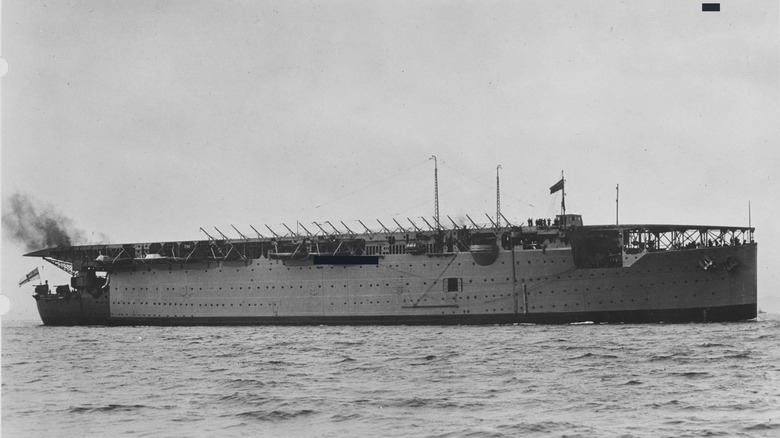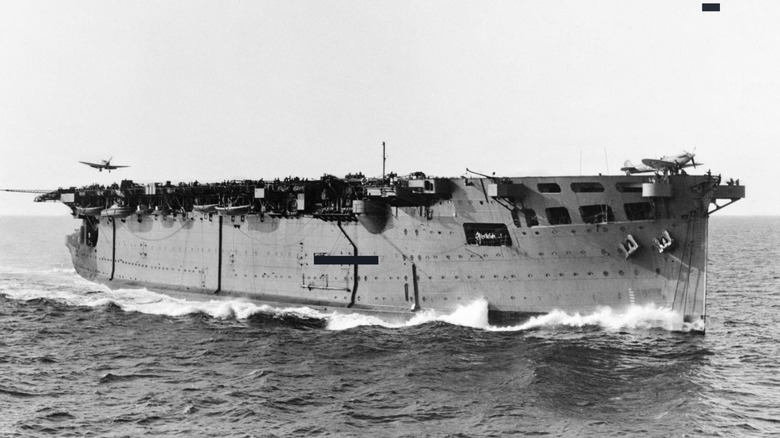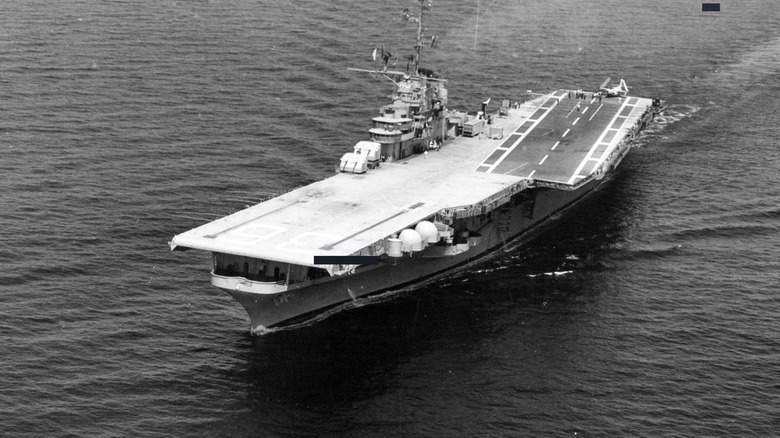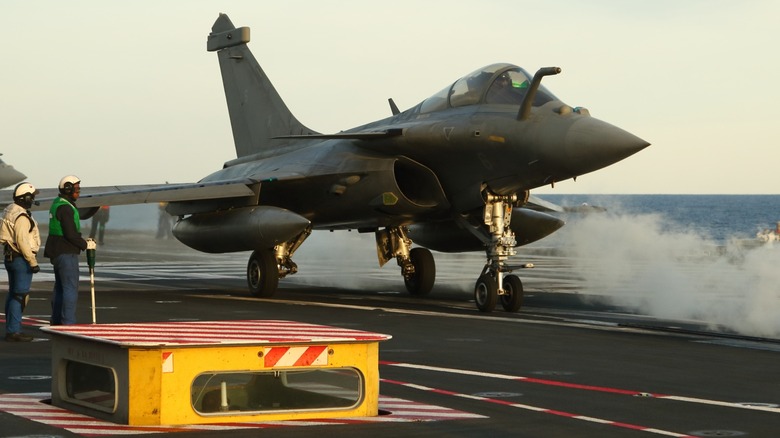What Was The First Aircraft Carrier With The Game-Changing Full Flat Landing Deck?
Although his name would be overshadowed by the success of the Wright Brothers, Eugene B. Ely performed the first aircraft launch off a seafaring vessel in November 1910. Ely used a wooden platform constructed over the United States' Birmingham cruiser to develop the basis of the aircraft carrier. However, at the time, the cruiser wasn't capable of transporting the very aircraft it would launch into battle. The crude wooden platform also proved insufficient for a perfect takeoff or landing, and Ely's efforts were far from smooth.
Ely's concept was adopted by the U.S. Navy shortly after World War I, with some battleships, like the USS Texas, receiving similar wooden platforms. The limitations of the wooden platform and the need to encumber vessels not built for carrying aircraft sparked a new concept that allowed a ship to both transport and launch fighter planes. Eight years after Ely's first launch off a ship-based platform, the British Royal Navy overhauled the HMS Argus into the first vessel designed with a full-length, flat flight deck.
The British introduced the first functioning aircraft carrier
Argus represented a milestone in naval warfare, allowing military powers to more efficiently attack from both sea and air. Originally an ocean liner built in 1914, Argus was outfitted with elevators that could move planes from the ship's below-deck hangars onto the full-length deck. While Ely's model proved that launching an aircraft from a ship was possible, it also proved that it wasn't sufficient for what the carrier concept would be needed for. After all, the world soon erupted into the First World War, and the strength of a nation's navy proved important for a clear victory.
Unlike the 80-foot temporary deck built for Ely's experiment, Argus sported a nearly 550-foot deck with a 330-foot hangar running beneath. Aircraft had the space required to reach the speeds needed to avoid the incidents that occurred during Ely's flight, like dipping so low that the propeller broke. Argus may have been the launching point for the modern aircraft carrier, but the full-length flight deck was just the start of the coming innovations.
The angled flight deck became the new standard for aircraft carriers
As with any early innovation, improvements were abound for the aircraft carrier. Argus proved that such a concept could work on a larger scale, but there were still some complications. These days, the most dangerous jobs on an aircraft carrier are on the flight deck, and this was the same issue that crews on some of the first aircraft carriers faced. In the traditional design, the flight deck was crowded with other aircraft and personnel, making it more dangerous for inbound pilots who may have misjudged their approach. On the angled deck, there was more room for parked or taxiing planes without limiting the landing space for inbound craft.
The British Navy first tested the new angled deck design on the HMS Triumph in 1952. Shortly after, the United States followed suit, duplicating the Royal Navy's tests on the USS Midway. Testing continued on the USS Antietam, which was converted to the new angled design in December 1952 and sent to Cuban waters for further testing the following January. Despite minor complications, including one pilot suffering from a back injury, the angled design was deemed practical. After a few adjustments were made to the angle of the deck, the U.S. started using it as the gold standard for future carriers.
All these innovations helped shape the modern aircraft carrier
While the British may have been the pioneers of the modern aircraft carrier flight deck, the U.S. Navy can be credited with addressing concerns over an aircraft's ability to reach the appropriate takeoff speeds. Like commercial aircraft at a local airport, aircraft carriers require a lot of runway space to speed up and take off safely. Fighter jets have a lot of thrust, but they still need a boost to get off the ship, so the U.S. Navy tested how a catapult system could work on its aircraft carriers.
In 1915, three years before the British Royal Navy altered HMS Argus, the United States tested a compressed air-powered catapult aboard the USS North Carolina battleship. Despite being a functional design, the catapult wasn't added to U.S. carriers until after World War II. The technology behind the aircraft carrier catapult system continues to evolve, with the future looking toward magnetic fields to create the forward thrust needed to propel aircraft off the full-length flight deck.



